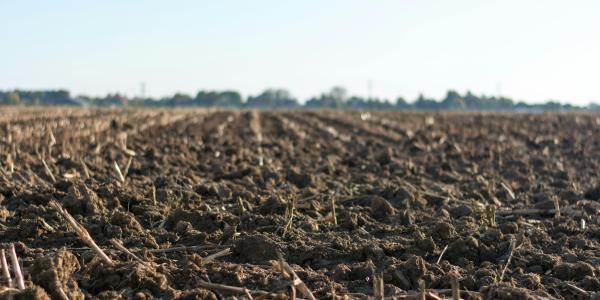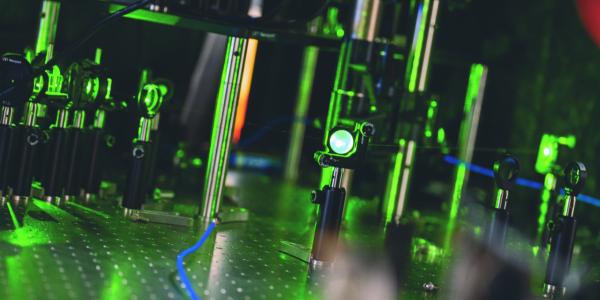The associate professor of physics is using mathematical tools to deepen our understanding of microbial ecology and evolution.
Mikhail Tikhonov, an associate professor of physics, isn’t your typical physicist. Instead of focusing on orbiting bodies, nuclear reactions, or quantum equations, he has devoted much of his research to a strange and unexpected world: communities of microbes, including bacteria that inhabit soil.
“What is a physicist doing looking at bacteria in dirt? I get that question all the time,” Tikhonov said. “But there’s a good reason. Physics is about using mathematics to make sense of nature that defies our intuition. And with microbes, there are plenty of opportunities to do that.”

Tikhonov uses theoretical tools of physics to study biological systems too complex for conventional approaches to ecology. A National Science Foundation CAREER award recipient, he has already contributed to several prominent studies highlighting his methods and approach. In July, he was a co-author of a Nature paper showing that a mathematical model can cut through the complexity of bacterial communities in soil, making it possible to predict how those communities and the soils they inhabit will respond to environmental change.
The ecology of bacteria creates real head-scratching scenarios, especially when compared with more typical examples of ecological interactions, Tikhonov said. “In a forest, you might see trees, rabbits, and maybe a fox. It’s pretty obvious that tallying up rabbits and foxes and asking how they interact is the ‘right’ level of description,” he said. “For microbes, that’s not obvious at all. Some things we used to take for granted may be simply wrong.”
In a microbial world, boundaries blur and interactions between different players become much harder to characterize. “Bacterial species are less well defined than animal species,” Tikhonov said. “Imagine you were looking at a forest full of rabbity foxes, foxlike rabbits, and everything in between. How would you even measure the dynamics in such a system? Similarly, how can you predict anything when even a tiny patch of soil has literally hundreds of distinct strains, all interacting with each other?”
That’s where the theories and mathematical tools of physics come in. As Tikhonov explained, physicists have had success finding “emergent simplicity” in extremely complex systems, whether in the structure of the universe or the flow of a river. In the case of microbial communities, Tikhonov builds models using a physics-inspired approach: You don’t need to know everything to predict something.
His work is aimed at a central question: Which properties of ecosystems can be predicted with the models of physics? “Instead of looking at fine-grain aspects, we want to step back and find the coarse grains, the big-picture qualities that really matter for the function and health of an ecosystem,” he said. “In the case of soil, finding these properties could help humans better manage a resource that supports our lives.”

For the recent Nature paper, Tikhonov worked with colleagues at the University of Chicago to show that it was possible to predict how the rate of denitrification in the soil — an important part of the nitrogen cycle — would respond to changes in pH, a measure of acidity. Instead of trying to predict how pH would affect each individual microbe or species of microbe, the researchers found that the experimental results were perfectly captured by a coarse-grained model treating all the diverse denitrifiers as a single group.
Roughly 1,500 meticulous experiments by Kiseok Lee, a graduate student at the University of Chicago and a co-author of the Nature paper, showed that the coarse-grained model accurately predicted every tweak in pH, a result that could have implications for agriculture and soil conservation. For example, a better understanding of the interaction between soil bacteria and pH could help farmers get better results from fertilizer while preventing harmful consequences such as algae blooms caused by nitrogen runoff. “It’s important to have experimental results to make sure our theories are grounded in reality,” Tikhonov said.
Tikhonov has used his mathematical insights to tackle other complicated questions. Earlier this year, he co-authored a paper that suggested a new approach to detecting the signals of alien life on other planets. Instead of looking for molecules or compounds associated with life as we know it, Tikhonov and his co-author argued that scientists could look for telltale patterns of energy in alien soil, air, or water.
His work has many potential practical implications, from improving fertilizer use to protecting waterways from pollution. But for now, Tikhonov is focused on the theoretical challenges. “Microbes challenge some of our most fundamental biological concepts and bring so many open questions,” he said. “As a theorist, that’s a great place to be.”
Header image credit: Pexels/Jan Kroon





